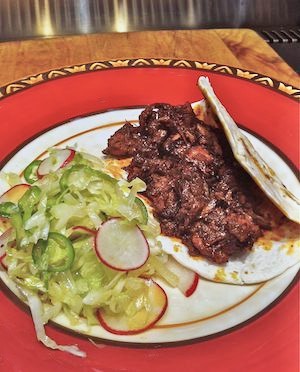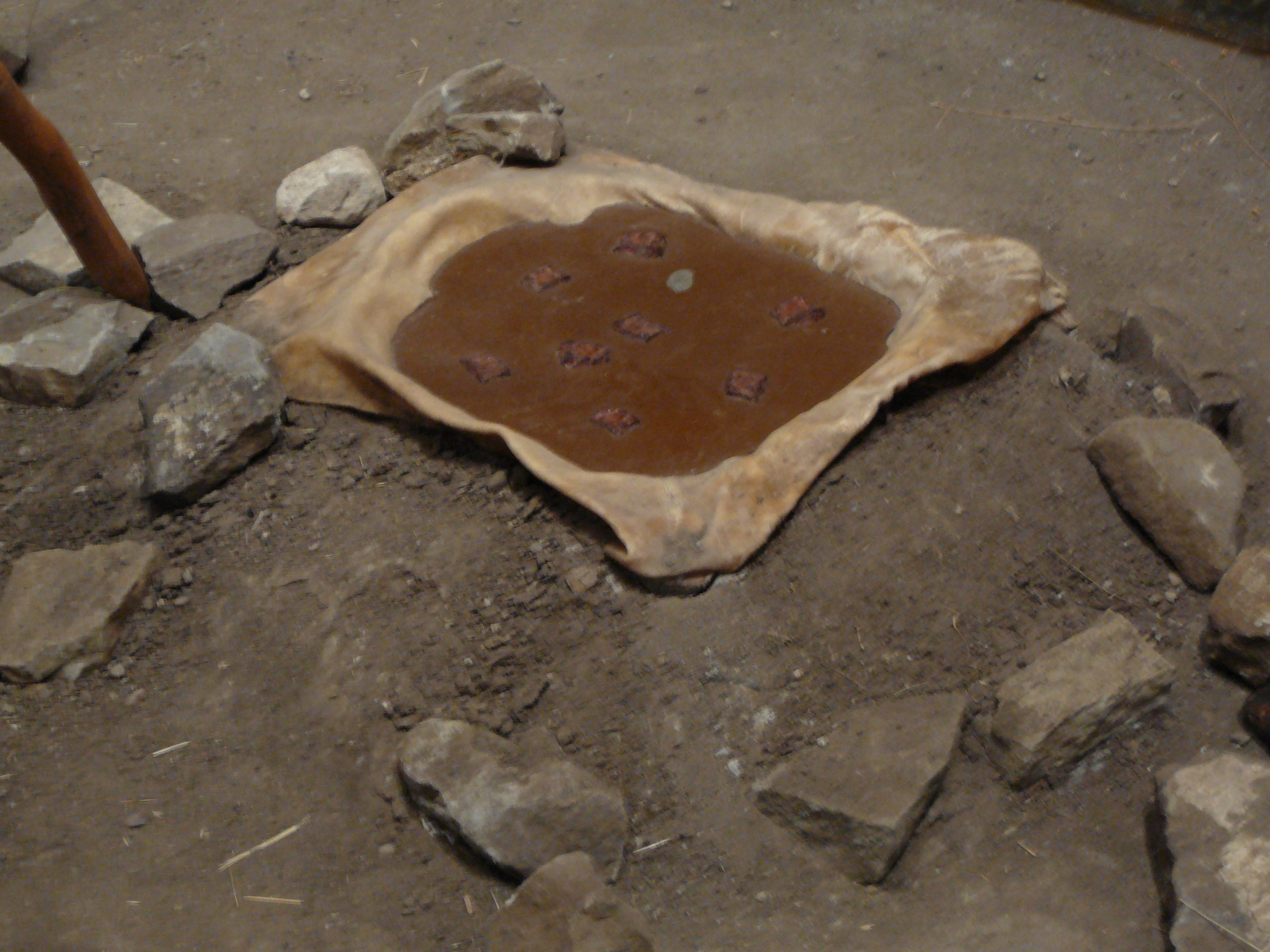Sinaloa Chilorio: Stone boiling


The region comprised of South Texas and Northeastern Mexico shares many similar food types and techniques with more southern regions because of the cohesion that existed. Archaeologist, Dr. Alston V. Thoms from Texas A&M writes that
“Given substantial populations in all parts of Texas for thousands of years, it is unlikely that there were any significant trade secrets in the world of basic cooking technology. In summary, the people of the interior South Texas were surely familiar with the types of game animals, aquatic resources and plant foods found in adjacent regions as well as with the methods the people there used to procure, process, cook and consume those resources.”
Chilorio is a type of pulled pork that is cooked by boiling: a cooking technique that dates back thousands of years. As seen in the picture, the cooking implement is made by digging a bowl in the earth, covering it with bark or hide and adding hot stones to bring the water to a boil (1). As the meat cooked slowly, it became “fall apart” tender. This technique was employed by the Indians of what is now Texas and Northeastern Mexico. They traveled back and forth across regions so it is not surprising that the Chilorio pulled pork of Sinaloa is similar to the Chile Con Carne of Texas.
 Indeed, on this 1824 map of Mexico, I drew the route that Cabeza de Vaca followed in 1500’s to travel from Galveston to Mexico City (2). I traced the white line to show that, as the natives did at the time, he traveled from Galveston all through Sinaloa. (I based this route on the one researched and drawn by Alex D. Krieger, University of Texas Press) There were other similar travel routes that made it commonplace to exchange cooking techniques and ideas between Texas and Mesoamerica.
Indeed, on this 1824 map of Mexico, I drew the route that Cabeza de Vaca followed in 1500’s to travel from Galveston to Mexico City (2). I traced the white line to show that, as the natives did at the time, he traveled from Galveston all through Sinaloa. (I based this route on the one researched and drawn by Alex D. Krieger, University of Texas Press) There were other similar travel routes that made it commonplace to exchange cooking techniques and ideas between Texas and Mesoamerica.
In this recipe I use Canola oil instead of lard because lard is a recent addition to our diet, having been brought here by the Spaniards. Indigenous peoples of Mexico did not like the pigs at first. They thought they were giant rats and harbingers of bad luck (3).
Sinaloa Chilorio Recipe
This recipe is adapted from the cookbook, “Truly Texas Mexican: A Native Culinary Heritage In Recipes”
Ingredients
1 1/2 lbs pork shoulder,cut into 1″ or 2″ cubes
1/2 tsp salt
1/3 cup Canola oil
4 Ancho chiles, wiped clean, seeded and deveined
1 Pasilla chile, wiped clean, seeded and deveined
3 Garlic cloves
1/2 tsp Coriander seeds
1/2 tsp Cumin seeds
1/2 tsp Dried Oregano
1/8 tsp Black Peppercorns
1 Tbsp White Vinegar
1 Tbsp Rice Vinegar
Method
1. In a dutch oven, place the pork cubes and add water to cover them, add the salt and bring to a boil
2. Simmer covered until the pork is fully cooked and soft, about one hour. Uncover in the last 15 minutes so that most of the water will have evaporated.
3. Transfer the pork to a bowl and pull apart the meat strands using two large spoons or spatulas.
4. Using a comal or cast iron skillet, dry roast the chiles slightly, not charred.
5. Place the roasted chiles in a bowl of hot water and let them soak for 15 minutes.
6. In a blender, place the soaked chiles, 1/2 cup of fresh water, all the spices and vinegars. Blend on high until you have an extremely smooth puree.
7. In the dutch oven heat the Canola oil and when it is shimmering add the chile puree slowly, stirring. Fry the puree for about 5 minutes. You will see the color change slightly and, as the liquid evaporates, it will thicken.
8. Add the meat to the chile and combine well.
Serve with warm flour or corn tortillas. Here’s the recipe for the Ensalada de Bodas, “Wedding Salad,” that makes a good accompaniment.
Enjoy!
References:
1. Stone boiling photo courtesy nativeamericannetroots.net
2. Map used by permission of the University of Texas Libraries, The University of Texas at Austin.
3. Relación De Michoacán, 1540.

Question……have you ever defatted the remaining water from “the boil” to use with the chilled in the blender?